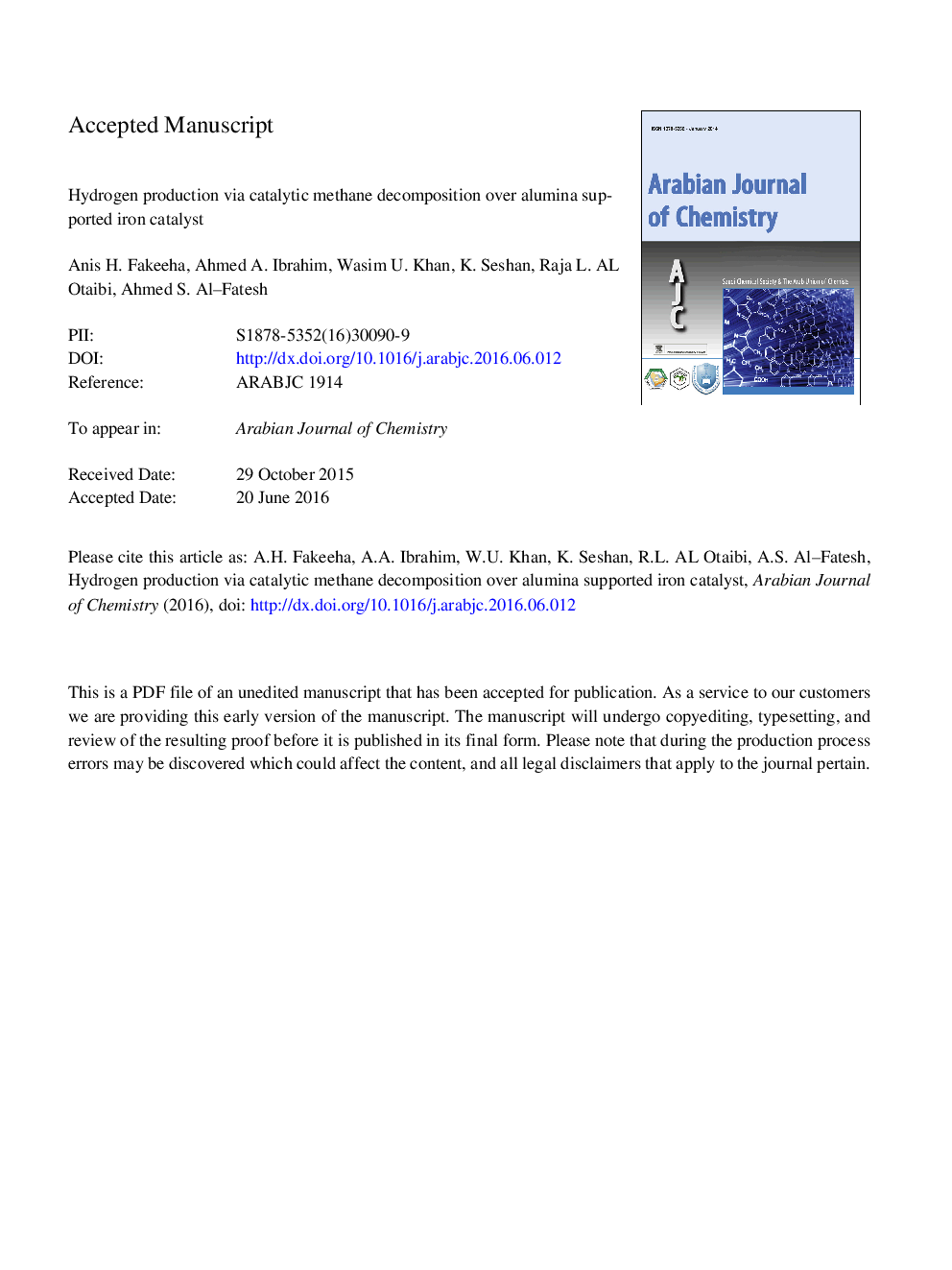| Article ID | Journal | Published Year | Pages | File Type |
|---|---|---|---|---|
| 7691612 | Arabian Journal of Chemistry | 2018 | 39 Pages |
Abstract
In this paper, iron-based catalysts, calcined at different temperatures (300-800 °C), supported over alumina, were investigated for hydrogen production via catalytic methane decomposition. The catalysts were prepared by using different methods such as impregnation and co-precipitation. The fresh and spent catalysts were characterized using different techniques such as Brunauer, Emmett and Teller (BET), temperature-programmed reduction by hydrogen (H2-TPR), X-ray powder diffraction (XRD), thermogravimetry analysis (TGA), Field Emission Scanning Electron Microscope (FESEM) and transmission electron microscopy (TEM). Results revealed that for both impregnated and co-precipitated catalysts, calcination temperature of 500 °C is optimal. Type of precursor iron oxide on the alumina support has a strong influence on its performance for methane decomposition.
Related Topics
Physical Sciences and Engineering
Chemistry
Chemistry (General)
Authors
Anis H. Fakeeha, Ahmed A. Ibrahim, Wasim U. Khan, K. Seshan, Raja L. Al Otaibi, Ahmed S. Al-Fatesh,
